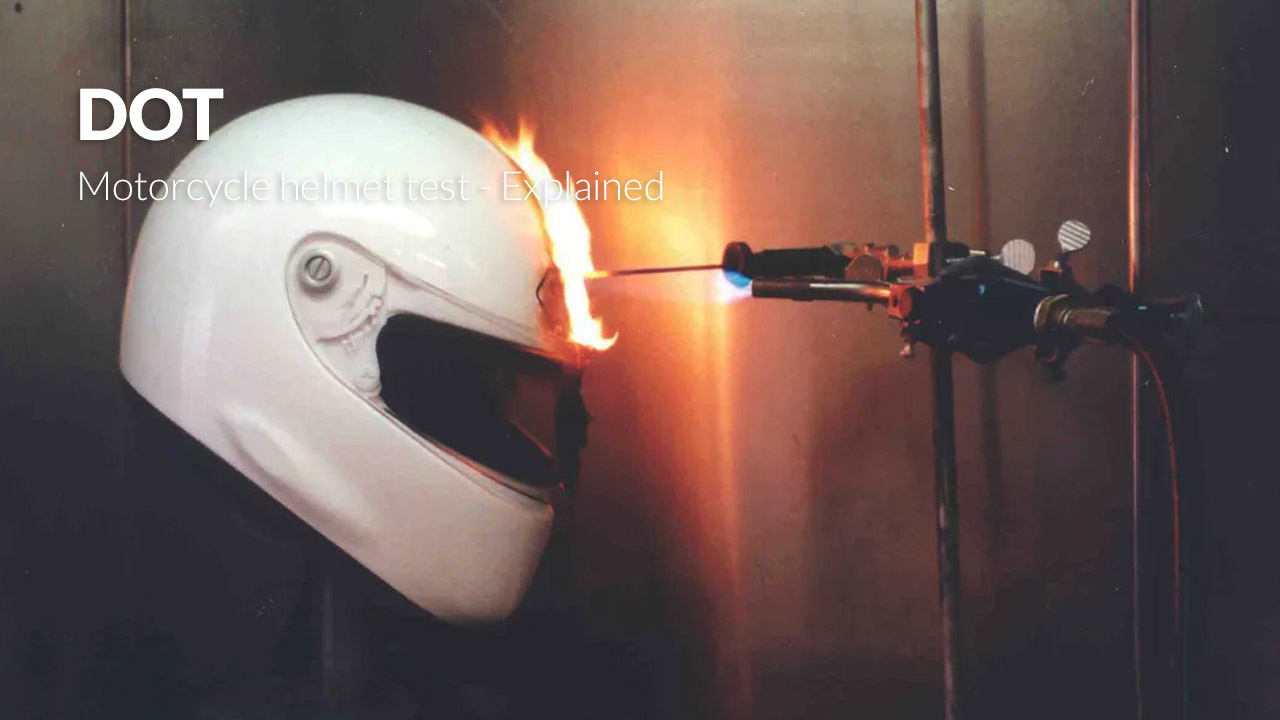DOT helmet test - Explained

The Department of Transportation (DOT) motorcycle helmet standard is a federal regulation in the United States that establishes minimum performance requirements for motorcycle helmet safety. In order to meet the DOT standard, helmet manufacturers must conduct a series of tests to ensure that the helmet can withstand impact, penetration, and retention.
The DOT impact test involves dropping the helmet from a height of approximately four feet onto a flat anvil surface. The helmet is dropped in several different orientations, including directly onto the crown, onto the front and rear edges, and onto the side. The helmet’s ability to absorb the impact energy and protect the head from injury is evaluated based on the acceleration and velocity of the helmet during the impact.
The DOT penetration test involves shooting a pointed projectile at the helmet from a distance of approximately 10 feet. The helmet’s ability to resist penetration by the projectile is evaluated based on the depth of penetration and the amount of force required to penetrate the helmet.
The DOT retention test involves pulling on the helmet in different directions to ensure that it remains securely on the head. The helmet’s retention system, including the chin strap and other fasteners, must be able to withstand a specified amount of force without breaking or releasing.
In addition to these tests, the DOT standard also includes requirements for the materials used in the construction of the helmet, as well as the labeling and instructions provided with the helmet. Overall, the DOT standard is designed to ensure that motorcycle helmets performance meets certain minimum requirements for impact, penetration, and retention, as well as materials and labeling.


















